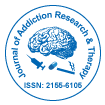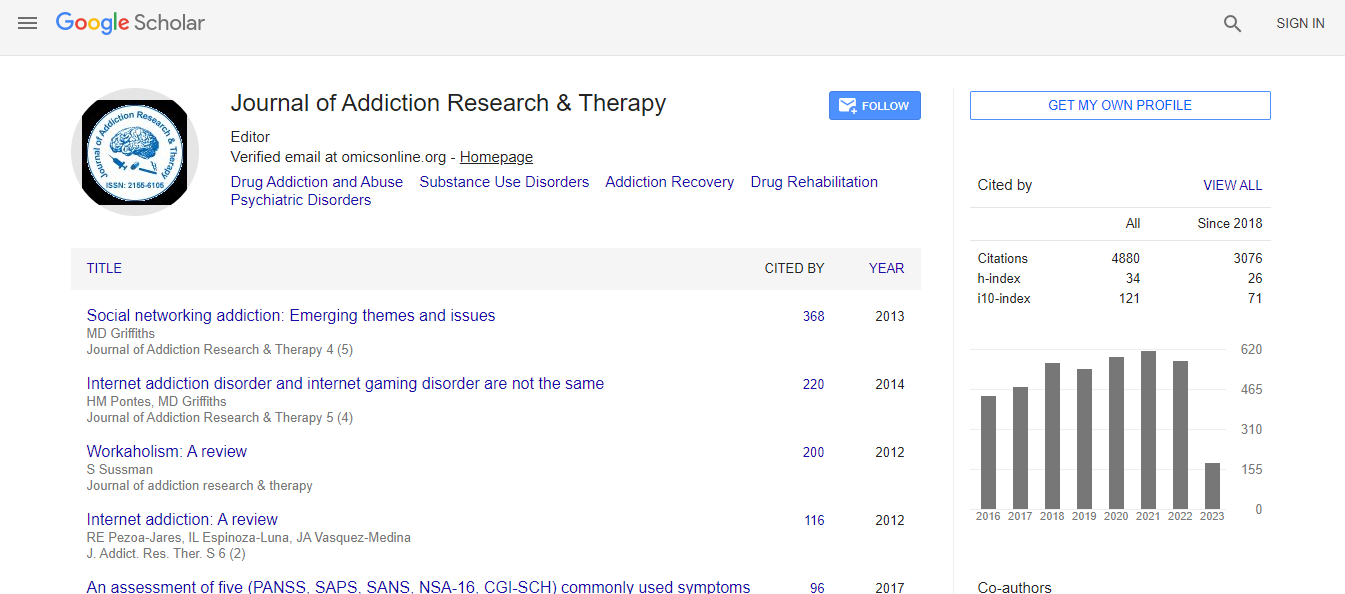Our Group organises 3000+ Global Conferenceseries Events every year across USA, Europe & Asia with support from 1000 more scientific Societies and Publishes 700+ Open Access Journals which contains over 50000 eminent personalities, reputed scientists as editorial board members.
Open Access Journals gaining more Readers and Citations
700 Journals and 15,000,000 Readers Each Journal is getting 25,000+ Readers
Google Scholar citation report
Citations : 4859
Journal of Addiction Research & Therapy received 4859 citations as per Google Scholar report
Journal of Addiction Research & Therapy peer review process verified at publons
Indexed In
- CAS Source Index (CASSI)
- Index Copernicus
- Google Scholar
- Sherpa Romeo
- Open J Gate
- Genamics JournalSeek
- Academic Keys
- JournalTOCs
- SafetyLit
- China National Knowledge Infrastructure (CNKI)
- Electronic Journals Library
- RefSeek
- Hamdard University
- EBSCO A-Z
- OCLC- WorldCat
- SWB online catalog
- Virtual Library of Biology (vifabio)
- Publons
- Geneva Foundation for Medical Education and Research
- Euro Pub
- ICMJE
Useful Links
Recommended Journals
Related Subjects
Share This Page
The effects of dopamine receptor genes on the trajectories of sport participation from adolescence through young adulthood
8th International Conference on Addiction Psychiatry
Chung Gun Lee
Seoul National University, Republic of Korea
Posters & Accepted Abstracts: J Addict Res Ther
Abstract
attrition rates for organized youth sport programs are surprisingly high. High attrition rates for youth sport programs highlights the need for longitudinal studies to understand how and why sport participation trajectories change during adolescence and young adulthood. Besides psychosocial and environmental factors, genetic variation has been suggested as an important determinant of physical activity-related behaviors. Since neurotransmitter dopamine influences the way humans learn and responsivity of human reward system, this study explored the effects of dopamine receptor genes (i.e., DRD2, DRD4, and DRD5) on sport participation trajectories from adolescence to young adulthood. Methods: This study used the National Longitudinal Study of Adolescent Health (Add Health) data. Group-based trajectory modeling was utilized to examine the effect of dopamine receptor genes on trajectories of sport participation from adolescence to young adulthood. Results: A three-group trajectory model best fit sport participation among male participants and a two-group trajectory model best fit sport participation among female participants. In both gender groups, the more individuals possess A1 allele of DRD2, the less likely they are to be in high-decreasing group rather than low-stable group, and this relationship was stronger for women. Another interesting finding is that, in male participants, the more individuals possess A1 allele of DRD2, the more likely they are to be in high-stable group rather than high-decreasing group. Conclusions: The findings of this study can be contributable to the literature by providing critical information on the effect of DRD2 on sport participation trajectories from adolescence through young adulthood.Biography
E-mail: cgl81@snu.ac.kr

 Spanish
Spanish  Chinese
Chinese  Russian
Russian  German
German  French
French  Japanese
Japanese  Portuguese
Portuguese  Hindi
Hindi 
